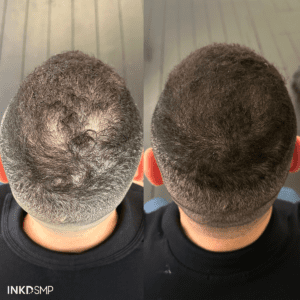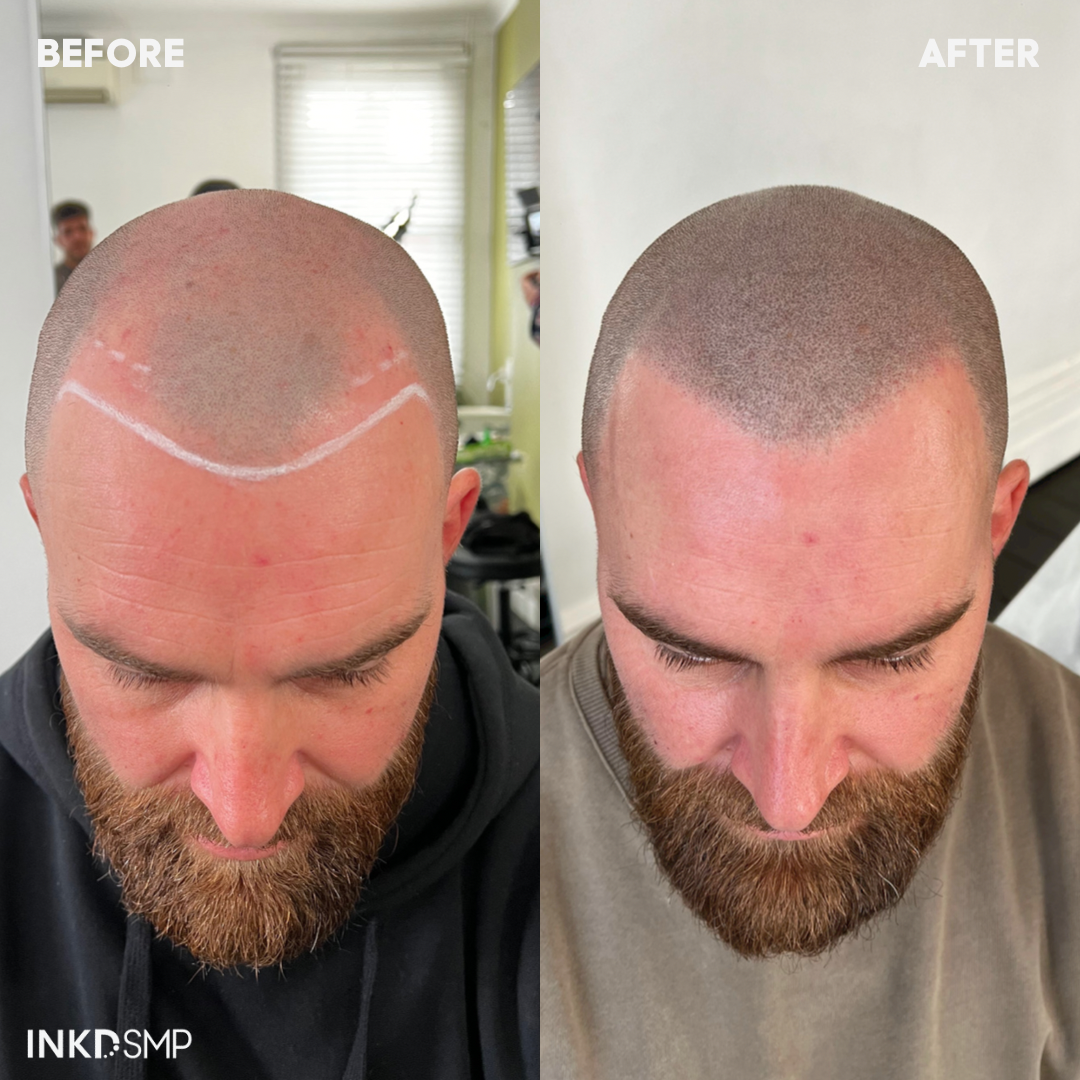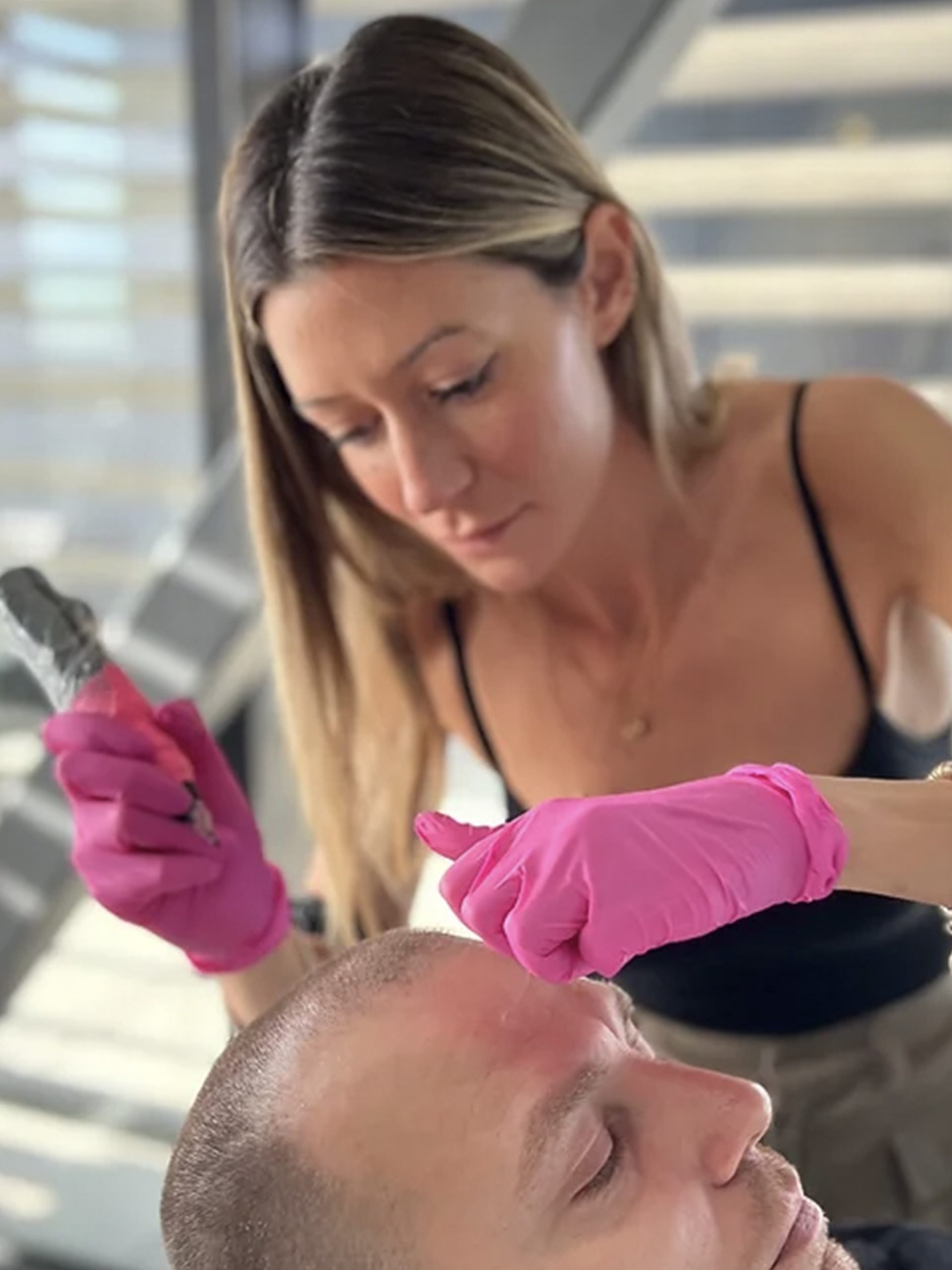Understanding Hair Loss: Types, Causes and the Most Suitable Solutions for Each
Hair loss impacts more people than you may think. Research from the Canadian Dermatology Association has found that hair loss like male pattern hair loss occurs in about 50% of men and four out of five men will experience some degree of hair loss by the time they turn 70.
For women, the number is slightly lower, with about 40% of the female population expected to experience hair loss or thinning hair by the time they turn 50. In America alone, hair loss is estimated to impact 80 million (50 million men and 30 million women), according to the American Academy of Dermatology.
Hair loss, which is also known as alopecia, is a disorder that causes the interruption of your body’s cycle of hair production. It can happen anywhere on your body (where there is hair), but the most noticeable hair loss occurs on your head, as that is where most of your hair is.
There could be any number of reasons behind your hair loss and it is important to pinpoint the cause of your hair thinning to ensure the best hair loss treatment for you. So, if you are looking to treat hair loss, you have come to the right place, as we will guide you through the different types of hair loss, common causes and most suitable options.
What is Hair Loss?
Hair loss, which is also called alopecia, can impact your head or even the hair on your entire body. While some shedding is expected as hair follicles produce new cells and push the old cells out through the surface of the skin, excessive shedding can be an issue.
You lose hair follicles naturally, up to 100 hairs a day, so seeing a few hairs lying around here and there isn’t really cause for concern. You can experience hair loss no matter your hair length and it can stem from a variety of issues like medical treatments or conditions, genetics, environmental factors and more.
Each follicle has its own hair growth cycle for you to naturally regrow hair. The life cycle is divided into three main phases:
- Anagen Phase – Here, you see active hair growth and it tends to last between two to eight years.
- Catagen Phase – This is the transitional hair growth phase and lasts between two to three weeks.
- Telogen Phase – This is the resting phase and lasts between two to three months. At the end of this phase, the hair cycle is complete, the follicle is shed and a new hair replaces it.
Type of Hair Loss
As we have previously mentioned, there are many different types of hair loss. It is important you understand which of the few hair disorders category you fall into so that treating hair loss can be most effective. For example, hereditary hair loss will have a different treatment solution compared to temporary hair loss.
We go through all the main types of hair loss below:
1. Androgenetic Alopecia (Male and Female Pattern Baldness)
Androgenetic alopecia, which is also known as androgenic alopecia, is a genetic form of hair loss and can affect both men and women. This type of hair loss, especially for men, is related to hormones, known as androgens and more specifically an androgen which is called dihydrotestosterone (DHT).
Those suffering from extensive hair loss from female and male pattern hair loss will find it difficult to naturally reverse the effects. Treatment options like minoxidil, finasteride and surgery are available. If these options aren’t appealing to you, SMP by InkdSMP offers a long-lasting solution that mimics the look of fuller hair and can cover bald patches.
2. Telogen Effluvium
Telogen effluvium is a type of hair loss that is specifically triggered by stress, illness or hormonal changes. It can impact a normal scalp and cause rapid hair shedding, which can sometimes bring on additional stress. The types of stress that may cause hair loss include; surgery, childbirth and serious illness.
The good news is that this type of hair loss is generally temporary and further hair loss is not usually seen after the cause of the stress goes away. Telogen effluvium can last multiple months though and if you would like more confidence while recovering from a stressful experience, InkdSMP’s SMP services provide a natural look of hair.
3. Alopecia Areata
Alopecia areata is an autoimmune disease where your immune system thinks part of your hair follicles are foreign and attacks it, causing patchy hair loss. It isn’t fully understood what causes the attack specifically on hair follicles, but it is thought that genetic and environmental factors have an influence.
Treatments like corticosteroids are available and while most treatments can help the situation, it can’t be cured. So, if you notice hair loss where it is extensive or regrowth isn’t likely, SMP can be a viable option. SMP by InkdSMP ensures a consistent appearance of hair on your scalp, which is suitable for those with patchy hair loss.
4. Traction Alopecia
Traction alopecia is a type of hair loss as a result of hair being repeatedly pulled or stressed. This damages the hair follicle and in the long term, can result in hair thinning and/ or hair loss. Hair in constant styles like braids, ponytails and cornrows may experience this type of hair loss. Also, chemical treatments like bleach or dyes can have an impact on hair loss.
If you have experienced permanent hair loss from traction or chemical treatments, InkdSMP can step in and assist you. SMP can recreate a natural hairline so it doesn’t look like you are losing hair and SMP is a solid option to consider as it is semi-permanent and low-maintenance.
5. Scarring Alopecia
Scarring alopecia, also known as cicatricial alopecia, is a type of permanent hair loss that causes damage to your hair follicles. You’ll find that hair falls out over an extended period over years or could be more rapidly, over a few months. Scarring alopecia can be caused by infections, chemicals, burns and autoimmune disorders.
Central centrifugal cicatricial alopecia is a form of scarring alopecia and with this type of hair loss, you are not only losing your hair, but it leaves scars. SMP can be an ideal option as it covers scar tissue while also providing a natural look for your hair. You won’t be able to grow hair back, but you will have the appearance of hair.
Other Types of Hair Loss
There are a few other types of hair loss that you may experience in your lifetime and we have listed some of them here:
- Anagen Effluvium – An abnormal and rapid loss of hair, usually as a result of cancer treatment (which includes radiation treatment).
- Alopecia Totalis – A more advanced form of alopecia areata that results in complete baldness.
- Frontal Fibrosing Alopecia – A hair loss condition that causes a receding hairline from the crown and frontal scalp. It is most common in postmenopausal women.
No matter the type of hair loss you may experience in your life, SMP can provide a low-maintenance and long-term solution. It can be difficult to see a receding hairline, patchy hair loss or even complete baldness, so the team at InkdSMP are here to listen to your needs and provide a personalised approach you are happy with.
Causes of Hair Loss
As we have previously mentioned, there are multiple causes of hair loss. Noticeable hair loss or overall hair thinning comes in many forms and it is important to understand the root cause of the issue and even look into early treatment if possible. The solution to any scalp hair issues will depend on the cause of the loss in the first place.
We take a deeper look at some of the main causes of hair loss below:
Genetics and Hormones
Hormones play a major role in hair loss and dihydrotestosterone (DHT), in particular, can cause male pattern hair loss. Hormones like abnormal levels of androgens can cause male pattern hair loss as well as female pattern hair loss.
Your genes, from both parents, can also come into play here. It could influence your genetic predisposition to male or female pattern hair loss. While male pattern baldness is more common, women are not immune, but there are a few treatment options available.
Medical Conditions
There are a raft of medical conditions that may cause further hair loss. Some of the medical conditions include:
- Thyroid disease
- Lupus
- Diabetes
- Iron deficiency
- Anemia
- Eating disorders
These medical conditions obviously have an impact on your overall health, but it is possible that your hair grows more slowly and can cause you to lose hair. Your scalp hairs will usually return to normal once the underlying issue is resolved.
Scarring may be present in some forms of lupus which could mean your hair growth slows or you won’t be able to regrow hair. Some conditions that cause inflammation can impact hair shaft abnormalities as inflammation destroys hair follicles.
Medications
It is common knowledge that some medications have side effects and one of those side effects is hair loss. Medications for cancer, high blood pressure and depression may cause hair loss. Even birth control pills can cause hair thinning.
Clinical Features of Hair Loss
There are many parts to your hair, including a hair bulb (which is at the base of the hair follicle) and everything needs to be working together for healthy hair growth. Hair loss occurs when follicles are damaged. The hair growth cycle isn’t working as it should, due to any number of reasons and it can cause hair shaft abnormalities.
If you are concerned about your hair loss, it is important to speak to a professional. Specialist doctors can help to properly diagnose the issue and put together a treatment plan. No matter if you are suffering from hereditary hair loss like male pattern hair loss or hair loss from inflammation in your subcutaneous tissue, a dermatologist will follow a proper diagnostic process.
They will check through your medical history and conduct an examination of your scalp hair, including lab tests to determine the cause of your hair loss or thinning hair. They should also provide a hair loss treatment solution, remembering that some conditions may be irreversible.
Treatment Options for Hair Loss
While some hair loss may be irreversible, meaning you won’t be able to grow back your own hair, there is a treatment option available for almost everyone. For some, medications and surgery are the way to go. This includes treatments like minoxidil, finasteride and hair transplant surgeries.
This might not be a viable option for everyone and hair transplant surgery can be a more invasive option. So, SMP becomes a more suitable solution. SMP is seen as a versatile option as it is non-surgical and low-maintenance.
SMP works for almost anyone, from those with vellus hair (i.e. light, fine and short hair) to those with tight curls. SMP doesn’t make your hair grow back, instead, it provides the illusion of fuller hair and is suitable for those suffering from hair shedding or loss. Professional SMP studios like InkdSMP can provide realistic scalp coverage that complements or substitutes other treatments.
Prevention of Hair Loss
When a hair follicle is destroyed it cannot grow hair, so it is important to do everything within your control to prevent hair loss. We understand that some types of hair thinning and loss are unavoidable and in these cases, SMP can offer support to give the appearance of thicker hair for those experiencing a receding hairline or patchy hair loss.
For those looking to maintain healthy hair, here are some tips to follow:
- Eat a well-rounded diet
- Manage stress levels
- Wash your hair regularly
- Avoid using excessive heat (like hair straighteners)
- Massage your scalp
- Don’t brush hair when it’s wet
- Use moisturising products
- Get regular haircuts
- Use silk pillowcases
Outlook and Prognosis for Hair Loss
Depending on the cause of your hair loss, you will see a different prognosis. Some causes of hair loss mean the condition is permanent, while others are reversible. Patchy hair loss from male pattern baldness, for example, or more likely to be a permanent condition. While others like hair loss from stress can be reversed.
No matter what the cause of your hair loss is, early treatment is critical, as it can improve the chances of success. To improve the appearance of your hair, SMP by InkdSMP can be an ideal option and works wonders for giving you your confidence back.
Final Words
There are many different types of hair loss, from traction alopecia to androgenic alopecia and everything in between. If you are suffering from hair shedding or loss, it is important to seek professional advice as soon as possible. Once you have the diagnosis you can start the relevant treatment.
While some treatments are recommended for specific types of hair loss, SMP by InkdSMP offers a solution to almost everyone and it is a natural-looking, non-invasive option. SMP is an ideal option even for those suffering from permanent hair loss and provides the illusion of thicker and fuller hair, no matter the type of hair loss.
How can INKDSMP Help?
SMP treatment can help in a couple of different areas:
- Restore thinning hairlines or create a new hairline (provides a “buzz cut” look).
- Thicken the look and help disguise thinning.
- Conceal and camouflage scars on the scalp.
- Create the appearance of fuller and thicker hair for females.



